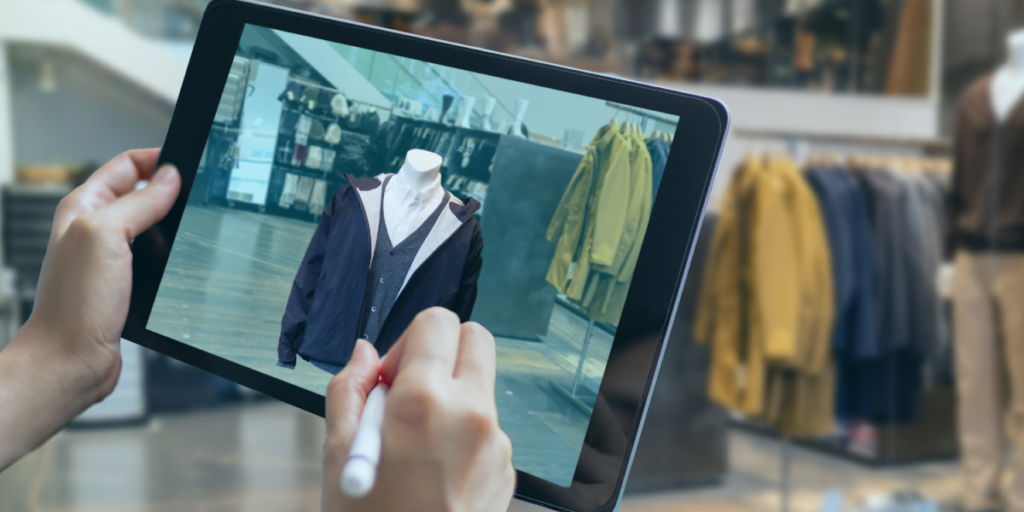Visual storytelling has emerged as a powerful method of communication in today’s media-driven world. It blends imagery, design, and narrative to convey messages in a way that captures attention faster than text alone. As digital platforms evolve and attention spans shorten, using visuals to narrate stories has become essential. From photographs and videos to infographics and animations, visual storytelling leverages the brain’s ability to process images 60,000 times faster than text. This makes it a vital tool for marketers, educators, journalists, and content creators seeking deeper engagement and emotional connection. Whether it’s a compelling Instagram post or a cinematic brand campaign, visuals can instantly convey tone, mood, and intention. In today’s era of visual overload, only narratives told with clear visual intent manage to stand out. Visual storytelling gives messages a form that resonates emotionally, speaks universally, and builds stronger audience relationships by appealing to our visual instincts.
Origins and Evolution of Visual Storytelling
Though it has gained modern relevance, visual storytelling is not a new concept. Its roots can be traced back to ancient cave paintings, hieroglyphics, and religious art. These early visuals were used to pass on knowledge, beliefs, and history before written language became widespread. Over centuries, visual narratives evolved through paintings, tapestries, photography, cinema, and digital media. From the frescoes of the Renaissance to the silent films of the early 20th century, visuals have long served as cultural artifacts and storytelling tools. As societies became more literate, text-based storytelling grew, but visuals never lost their place—they simply adapted. Today, we see its sophistication in everything from Instagram stories to documentary films and motion graphics. As visual literacy increases, so does the demand for nuanced and intentional design in storytelling. The evolution of tools and platforms has only enhanced the way stories are told, but the core principle remains the same: communicating meaning through imagery that connects emotionally and intellectually.
Why Visuals Speak Louder Than Words
Humans are inherently visual creatures. Studies show that people remember 80% of what they see compared to just 20% of what they read and 10% of what they hear. Visual storytelling taps into this biological preference, making messages more memorable and impactful. Visual cues like color, contrast, and composition trigger emotions and guide interpretation. A single image can express what pages of text may struggle to convey. For instance, a photo of a crying child in a war zone evokes empathy far more quickly than a written description. The visual element bypasses the analytical brain and taps directly into our emotional core. This emotional resonance is what makes visual storytelling such a compelling tool across industries. It transcends language barriers and communicates universally understood messages. In advertising, education, activism, or entertainment, images have the power to change perception, spark action, and embed stories deeply within memory. In an age saturated with information, visuals are often the difference between being ignored and being remembered.
The Key Elements of Visual Storytelling
Effective visual storytelling combines several elements to craft a meaningful narrative. These include character, setting, conflict, resolution, and theme, all embedded within visuals. A strong protagonist—be it a person, brand, or symbol—anchors the viewer. The setting provides context, while the conflict drives tension and interest. The resolution offers closure or provokes further thought. Color palettes evoke mood—warm tones might suggest comfort or passion, while cooler hues may convey calm or isolation. Composition influences how the viewer’s eye travels across an image. Leading lines, symmetry, negative space, and focal points all guide the visual flow. Typography, icons, and layout play supporting roles in digital and print media, enhancing the legibility and tone of the message. The harmony of these elements ensures coherence and clarity. Visual storytelling doesn’t just mean beautiful images—it requires intent and structure to ensure that the visual message aligns with the story’s purpose. Without these fundamentals, even striking visuals can fall flat and lose their impact.
Platforms that Amplify Visual Stories
In the digital age, numerous platforms have become vessels for visual storytelling. Social media apps like Instagram, TikTok, and Pinterest are built on visual-first principles. They prioritize imagery and video over text, encouraging creators to craft stories that are engaging at a glance. YouTube and Vimeo serve as hubs for video storytelling, offering longer, immersive narratives. Websites and blogs often integrate infographics, interactive scrolls, and embedded videos to create engaging content journeys. Even traditional platforms like print magazines, outdoor billboards, and television commercials continue to thrive with strong visual content. Each medium offers unique storytelling opportunities. For instance, TikTok allows for short, punchy, user-driven narratives, while YouTube permits cinematic storytelling with sound design and editing. Visual storytelling adapts to these platforms by optimizing format, duration, and visual design to meet user expectations. The right platform enhances the story’s reach and emotional power, making it crucial for creators to consider where and how their visuals will be seen.
The Role of Technology in Visual Narratives

Technological advancements have transformed the landscape of visual storytelling. High-quality cameras, drones, editing software, and design tools have made professional storytelling accessible to individuals and small teams. Once limited to studios with massive budgets, storytelling tools are now available on smartphones and free applications. Augmented Reality (AR) and Virtual Reality (VR) are taking immersive storytelling to new heights, allowing users to experience narratives in fully interactive environments. For example, museums now use AR to bring historical artifacts to life, while VR documentaries let users walk through refugee camps or ancient ruins. Artificial Intelligence is being used to analyze audience engagement and tailor visual content accordingly, optimizing visual layout or suggesting scene edits based on predictive models. These innovations enable creators to experiment, personalize, and scale their stories like never before. Visual storytelling is no longer confined by budget or geography—it thrives on creativity and innovation. The democratization of tools has ushered in an age where everyone, from a teen on TikTok to a director in Hollywood, is a potential visual storyteller.
Storytelling in Branding and Marketing
In branding, visual storytelling is a cornerstone of emotional marketing. Successful brands use visuals to create a consistent identity and build strong connections with their audience. Think of Nike’s bold visuals that emphasize movement and empowerment, or Apple’s sleek and minimalistic imagery that reflects innovation. Through design, photography, packaging, and advertising, brands craft emotional journeys that reflect their values and promises. A well-designed logo tells a story of heritage or innovation; a video ad narrates a customer’s transformation or aspiration. Brands tell stories through not just what they show, but how they show it—angles, lighting, pacing, and even soundtrack choices contribute to the overall narrative. Visual storytelling builds trust, differentiates products, and drives consumer loyalty. It allows companies to show rather than tell, establishing a narrative that resonates deeply and sticks with the viewer long after the initial impression. In the age of brand activism, visual storytelling also helps companies communicate their stance on social issues, sustainability, and diversity with clarity and authenticity.
Educational Applications of Visual Stories
Beyond marketing, visual storytelling plays a vital role in education and learning. Infographics, diagrams, animations, and video lectures enhance comprehension and retention. Concepts that are hard to grasp through text alone—like molecular biology, geometric theorems, or historical timelines—can be made clear through visuals. Educational institutions now use storytelling formats in e-learning platforms, combining video, audio, and illustrations to enrich learning experiences. Visual storytelling helps simplify complex topics while maintaining depth and nuance. For example, animated explainer videos break down scientific processes into digestible steps, and interactive timelines bring history to life. Students absorb information better when it is presented visually, especially for complex or abstract subjects. Educators increasingly use visual narratives to teach history, science, and languages, making learning more interactive and engaging. Platforms like TED-Ed and Khan Academy exemplify how stories told through visuals can inspire curiosity and foster understanding. Visual storytelling helps bridge knowledge gaps, making education accessible and impactful for diverse learning styles and learners of all ages.
Documentary and Journalistic Use of Visual Narratives
In journalism and documentary filmmaking, visual storytelling brings real-life events to audiences with authenticity and immediacy. Photojournalists capture defining moments that often become iconic representations of historical events. Think of images from the Vietnam War or civil rights movements—they are etched into public memory more vividly than any article. Documentaries use visual arcs to inform, persuade, and provoke thought, weaving footage, interviews, and archival material into compelling narratives. In a world overwhelmed by information, strong visual narratives stand out and stay with viewers. Visual storytelling delivers truth with impact, capturing nuance, emotion, and context that words may struggle to convey. Whether it’s a war photo, a short doc on climate change, or an infographic explaining political policies, visuals help distill complex events into understandable and emotionally resonant forms. It also adds context and emotion, helping audiences not just understand but empathize. Responsible visual storytelling in journalism also requires ethical integrity—ensuring accuracy, consent, and fair representation of subjects and stories.
Crafting Stories with Purpose and Perspective
Every effective visual story starts with purpose. Whether the goal is to inform, entertain, persuade, or inspire, creators must first understand their audience and message. A strong story requires clarity of intention, which drives visual decisions from format to tone. Creators must consider cultural context, audience expectations, and desired outcomes. Perspective also matters. Who tells the story and how it’s framed influences interpretation. A story about poverty told from a position of privilege may lack authenticity, while a firsthand visual narrative carries emotional weight and truth. Visual storytelling must strive for authenticity and inclusivity, especially when representing diverse communities or sensitive issues. Ethical considerations are crucial in ensuring that visuals are not only compelling but responsible. Choices around subject portrayal, image editing, or cultural symbols have significant implications. The most powerful stories are those grounded in truth and empathy. Visual storytelling becomes more than aesthetics—it becomes a tool for connection, understanding, and impact when rooted in thoughtful purpose.
Conclusion: Embracing the Future of Visual Storytelling
Visual storytelling continues to evolve as a dominant force in communication, blending art, technology, and human emotion. It allows us to connect across cultures, learn in new ways, market with empathy, and document our world with depth. As digital tools and platforms advance, the potential for more immersive, interactive, and inclusive visual narratives grows. From emerging creators on mobile apps to seasoned filmmakers, visual storytelling offers a democratic canvas for expression. But at its core, visual storytelling remains about sharing the human experience—one image, frame, or design at a time. Whether you’re a creator, educator, brand, or consumer, understanding and embracing visual storytelling is essential in shaping how we see and share our world. As we navigate an increasingly visual culture, the stories we choose to tell—and how we choose to tell them—will influence not only our communication but also our collective memory, empathy, and understanding of one another.
















